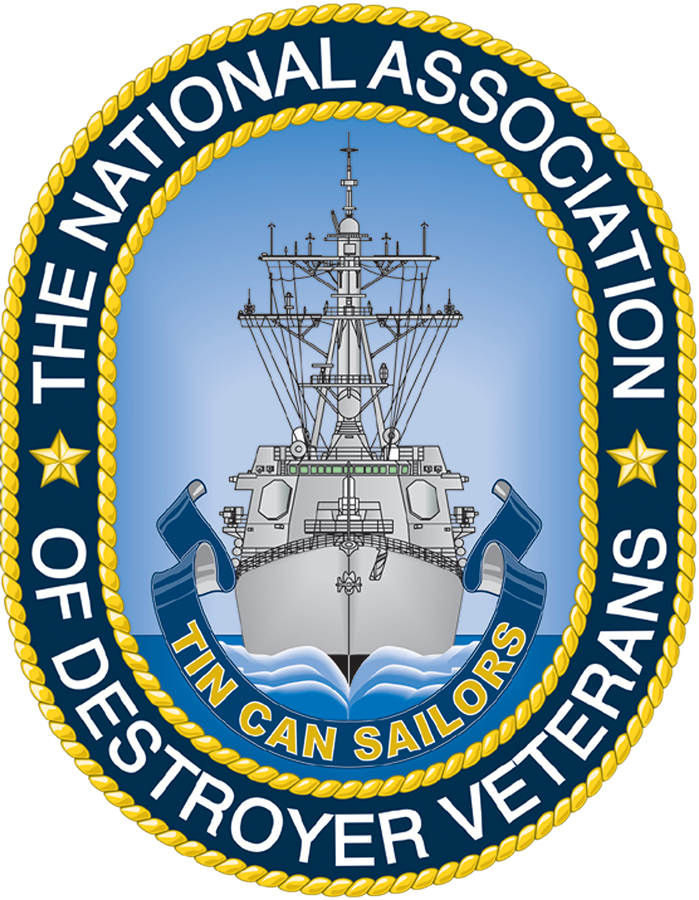Hull Number: DD-421
Launch Date: 11/15/1939
Commissioned Date: 07/25/1940
Decommissioned Date: 03/18/1946
Call Sign: NAGF
Class: BENSON
BENSON Class
Data for USS Benson (DD-421) as of 1945
Length Overall: 347' 10"
Beam: 36' 1"
Draft: 13' 6"
Standard Displacement: 1,620 tons
Full Load Displacement: 2,525 tons
Fuel capacity: 2,912 barrels
Armament:
Four 5″/38 caliber guns
Two 40mm twin anti-aircraft mounts
Two 21″ quintuple torpedo tubes
Complement:
16 Officers
260 Enlisted
Propulsion:
4 Boilers
2 Bethlehem Turbines: 47,000 horsepower
Highest speed on trials: 36.7 knots
Namesake: WILLIAM SHEPHERD BENSON
WILLIAM SHEPHERD BENSON
Dictionary of American Naval Fighting Ships, March 2016
Born on 25 September 1855 on a plantation in Bibb County, Ga., William Shepherd Benson entered the Naval Academy on 21 September 1872 and graduated on 20 June 1877. Following two years of service off the coast of South America (first in the flagship Hartford and, after New Year’s Day 1879, in the steamer Essex) he reported to the famous frigate Constitution at Norfolk in October 1879 and subsequently sailed the North Atlantic in her from Nova Scotia to the West Indies training apprentice seamen. At the end of six months of duty at the New York Navy Yard, Benson served briefly in the gunboat Alliance in home waters before joining Yantic in May 1882 to participate in that screw gunboat’s cruise to Arctic waters near Greenland searching for the ill-fated Greely expedition. Shore duty at Boston under the Naval Advisory Board and at Baltimore with the Hydrographic Office preceded an assignment in the Fish Commission steamer Albatross through 1886 and 1887. The following January, orders sent Benson to Dolphin for a round-the-world cruise. In the fall of 1890, he began three years of work as an instructor in the Department of Seamanship, Naval Construction, and Tactics of the Naval Academy. He taught ordnance at the Washington Navy Yard in the autumn of 1893 before reporting to the Coast Survey in January 1894 for a two-year tour. He returned to Dolphin early in 1896 to participate in her survey of the Atlantic coast of Guatemala in January and February. He left the dispatch vessel in August to return to the Naval Academy where he again taught seamanship until just after the outbreak of war with Spain.
In May 1898, Benson reported to the old ship-of-the-line Vermont, then serving as the receiving ship at the New York Navy Yard; but, on 1 December 1898, he transferred to Chicago when she was recommissioned. While that protected cruiser was making a brief cruise to the West Indies as a unit of the North Atlantic Squadron, she was selected to be the flagship of the South Atlantic Squadron upon the reestablishment of that organization; but, en route to the coast of South America, the cruiser crossed the Atlantic to Tangier to support American claims against Morocco.
Benson left Chicago in the fall of 1899 to become aide to Rear Admiral Norman von Heidreich Farquhar, commander of the North Atlantic Squadron and then returned to Annapolis to serve as assistant commandant of midshipmen between 1901 and 1903. He went to Iowa (Battleship No. 4) as executive officer during operations in the North Atlantic and the Mediterranean before becoming lighthouse inspector for Charleston, S.C., from 1905 to 1907. During the latter year, he returned to the Naval Academy as commandant of midshipmen.
Command of Albany took the rising officer to the Pacific coast of Central America during 1908 and 1909 before he became chief of staff to the commander-in-chief of the Pacific Fleet, Admiral Uriel Sebree. Soon after accepting that post, Benson was promoted to captain on 24 July 1909. An even more impressive command, the new battleship Utah (Battleship No. 31) of the Atlantic Fleet, came to him in 1910; and, three years later, he took command of the Philadelphia Navy Yard, his last assignment before he was sworn in on 11 May 1915 as the first Chief of Naval Operations (CNO), with the temporary rank of rear admiral.
While preparing the Navy for combat during his more than four years in that post, Benson gave strength and shape to what had originally been a somewhat weak and amorphous office. For his services during his first months as CNO, Benson was rewarded with the wartime rank of admiral starting from 29 August 1916. After the United States entered World War I in the early spring of 1917, he directed the Navy’s operations through the end of the conflict. Then, while serving as the principal naval officer during peace negotiations following the armistice, he insisted upon American naval equality with England.
On 25 September 1919, his 64th birthday, Benson retired from the Navy with the permanent rank of rear admiral. However, he continued his public service by his championing the cause of a strong merchant marine while chairman, and subsequently as commissioner, of the United States Shipping Board. On 21 June 1930, Congress restored his full wartime rank of admiral.
Admiral Benson died in Washington, D.C., on 20 May 1932.
Disposition:
Transferred to Taiwan, as loan, on 02/26/1954 as LO YANG (DD-14). Stricken 11/1/1974. Scrapped in 1975.
